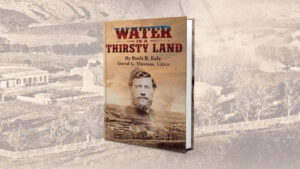38 Nooses: Lincoln, Little Crow, and the Beginning of the Frontier’s End
By Scott W. Berg, Pantheon
Thirty-eight Dakota Indians were hanged in Mankato, Minn., on the day after Christmas 1862. It was the largest government-sanctioned execution in U.S. history, and arguably the most overlooked tragedy of the Indian Wars. Now 38 Nooses offers an evenhanded examination of the harsh realities that snowballed into the Dakota War, a.k.a. the Sioux Uprising.
It all started when a small hunting party arrived at a farm in the Minnesota River valley, intending to ask for food and water. Instead, the Indian hunters killed three white men, a woman and a teenage girl. The reasons remain sketchy: “An argument about stealing eggs,” Scott W. Berg writes, “then an accusation of cowardice, and then a dare to shoot the white man.” White survivors fled to sound the alarm while the Indians hurried home, where a war council was held. Dakota leader Little Crow, who had kept the peace between his people and white settlers, reluctantly agreed to go to war and drive the settlers from the valley after some of his people questioned his bravery, saying, “Ta-o-ya-te-du-ta is not a coward: he will die with you.”
The six-week war that followed, Berg argues, foreshadowed and shaped later events at Little Bighorn and Wounded Knee.
The farm incident had just put match to tinder. The winter had been harsh, the summer hot, and many Indians were facing starvation. Government annuity payments, as always, were slow in coming. Belligerent trader Andrew Myrick refused to give the Dakotas credit, allegedly saying they could eat grass or their own dung. His words made an impact: When Myrick’s body was found during the uprising, his mouth was stuffed with grass.
The Indians raided agency stores for food, and attacked settlements and even Fort Ridgely. They took women and children hostage, and sent whites fleeing the frontier. Between 400 and 600 whites were killed (Indian casualties are not known), but it was a war the Dakotas could not win. Henry Sibley— Minnesota’s first state governor, now a colonel of the state militia— quickly responded with a punitive campaign. After his army’s victory at Wood Lake in late September, the war was all but over, the hostages were released, and the trials began.
“The tally: in fewer than thirty days spread across six weeks, 392 trials had been held, resulting in 303 sentences of death, 16 sentences of imprisonment, and 69 acquittals,” Berg calculates. “During the last phase of the trials, in fact, a Dakota warrior was likely to be sentenced to death simply because he could not produce a witness to vouch for his conduct.”
Despite being preoccupied with preserving the Union, President Lincoln intervened, sparing the lives of 265 Dakotas, one at the last moment. But, Berg observes, the war destroyed the Dakotas. In April 1863, they were expelled to South Dakota and Nebraska, helping to set the stage for Custer’s Last Stand. It also destroyed Little Crow. He had escaped capture and execution, but was killed on July 3, 1863, at a farm near Hutchinson, Minn., where he stopped with his son to pick raspberries.
Originally published in the June 2013 issue of American History. To subscribe, click here.




